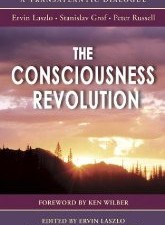How Intuition Can Work For You
Why Did I Think Of That Now?
Let’s not get ahead of ourselves. Mission one is to learn to identify these Intuitions consistently. Since Intuitive thoughts and images are very fleeting, it is easy to miss them or reject them, because they are not what our rational mind is focusing on at the moment. There is a tool that works, in any situation, to help with this identification. It is a simple question you can apply at any time.
You may be rushing to a meeting, busy preparing for an impending deadline, or even in the middle of a conversation with someone when a thought or image slips into your mind with a hint of inspiration. It’s an Intuition, but your rational mind may want to dismiss it or try to convince you the idea will come again later.
Simply ask, “Why did I think of that now?” This question will prompt you to pause, regardless of whether it’s obvious or still a mystery. The primary action should be to stop and ponder it long enough to make sure you aren’t missing the significance this thought might have to you at that very moment. Asking this question also allows you to assess whether the thought was a type of fear habit, part of you ego calculations or a pivotal Intuition for now or later.
I can’t tell you how many key Intuitions I’ve had like this. I could be in the middle of something serious when someone I know pops into my mind. And every time I stop what I’m doing, and immediately call that person, I hear the same comment: “I was just thinking about you.” Very often, the conversation then leads to an extraordinary SYNCHRONICITY that arrives at just the right time.
This is the how Intuitions, and their resulting Synchronistic outcomes lead our lives forward. First, you sense a guidance that you act on, and then you experience a vital Synchronicity that opens a door or gives you information that fuels your destiny.
Intuitions As Premonitions
Premonitions often bring us thoughts or gut feelings, about what not to do. Usually, they appear in our minds as nagging sensations of an impending problem or images of something unfortunate happening in the future.
While taking a road trip with a friend, I found myself suddenly uneasy. Then followed a fleeting image of the car I was riding in, skidding on the road. I looked at my friend, who was driving (and was not wearing his seatbelt), and expressed my concern that something might happen, yet he just laughed at the idea. I tried to convince him to put on his belt, but he was unconcerned. Within fifteen minutes, a car in front of us slammed into another car while attempting to turn, and we skidded thirty feet into the pileup. I was unhurt, but my friend bruised his lip on the steering wheel.
To identify true Premonitions, it seems we must separate these Intuitions from fear or worrisome thoughts. Everyone has experiences that they create fear in certain activities. Maybe it’s climbing ladders or flying in airplanes. We might worry every time we approach these particular activities. Others have worrisome or cautionary thoughts on most every occasion they find themselves. In these cases, we have to sort through these reactions and identify a genuine Premonition when it transpires.
When a thought comes to us, that seems to be a Premonition, we must first try to remember any feelings of worry that directly preceded the Intuition. If there is this link between the distress and the thought, then perhaps it is just one more overly cautious feeling. However if you can fully identify an emotional charge similar to one accompanying an Intuition, it may be a genuine inner warning that should be taken very seriously. Asking the question, “why did I think of this now,” also works as you sort through your thoughts and emotions.
In sum, Intuitions are a very real part of your mental ability. Yet, to identify them reliably, we must assume a “detached observer” point of view so we can sort through our thoughts. In this way, we can watch for ideas or images that have a hint of emotional inspiration or urgency to them. They feel as though they just appear in our minds – as opposed to the more calculative or worrisome thoughts that come from the ego. It is instrumental to this process to use the halting technique of asking, “why did I think of that now?” You may not be able to answer the question immediately, but it stops you, so you can take the thought seriously, and follow what the Intuition is guiding you to do.
Often, these guiding thoughts lead us to Synchronistic information and opportunities, but they also result in frequently clarifying ideas on how we can help others in a variety of situations. It could be a life-changing message to another that we receive, at possibly just the right time. Identifying Intuitions, and applying them, opens up the link to our higher intelligence while, over time, becomes a larger download of “knowing” that can elevate us beyond our greatest expectations.
Want to know the most important factor in learning to flow with your Intuitions? Make a decision to stay in the consciousness that opens you up to them. In other words, be the observer of your inner mind and consciously allow your life to be guided by it.
To Read More on This Topic, See My Article: “How Synchronicity Can Work For You”
My Recommended Reading: The Consciousness Revolution by Evin Lazlo
Share With Family and Friends





